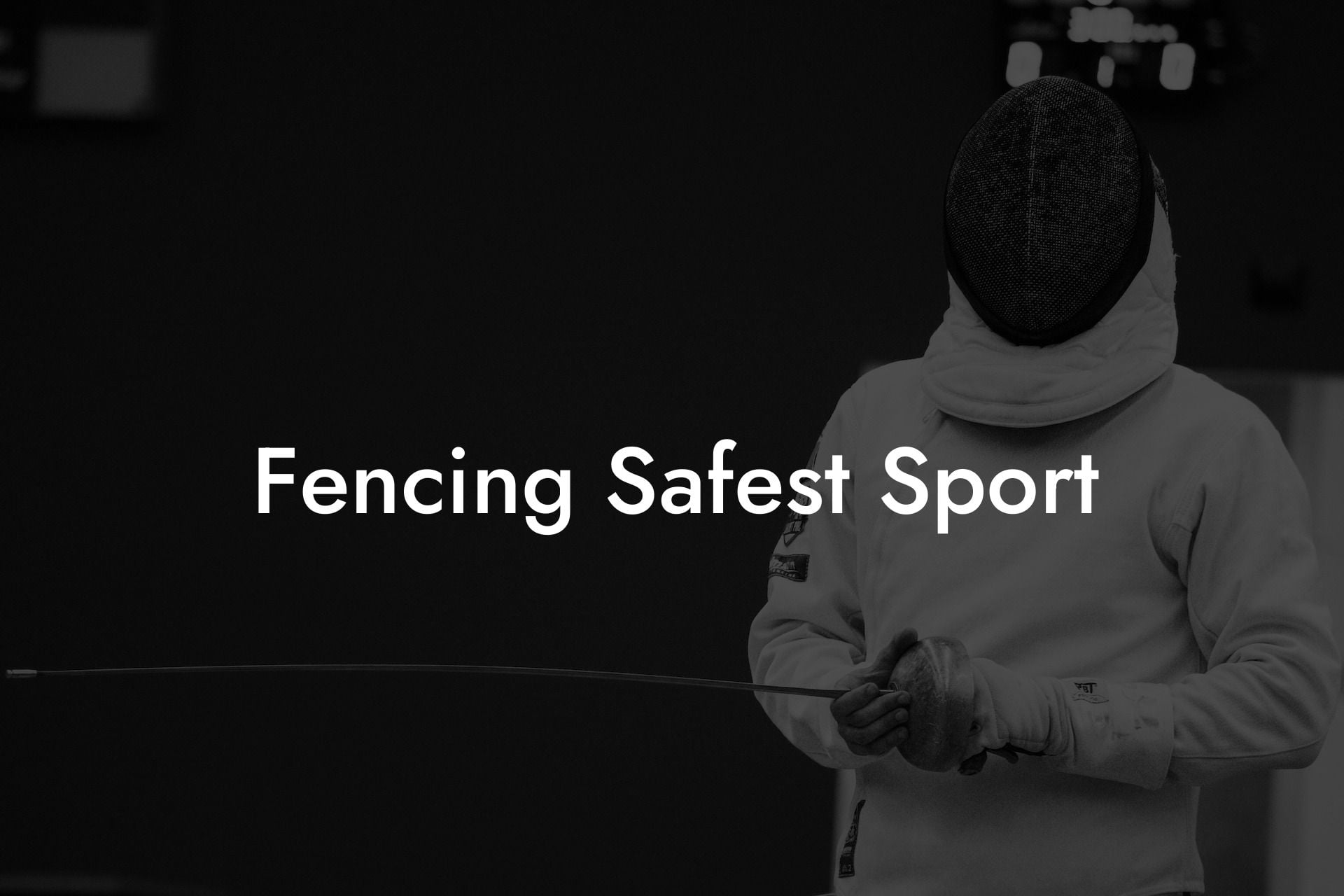Discover why fencing is considered one of the safest sports out there, and learn about the protective measures and equipment that contribute to its low injury rate. From essential gear to proper technique, we delve into what makes fencing an exciting yet secure sport for athletes of all ages.
Fencing Safest Sport Table of Contents
The Safety Measures and Equipment in Fencing
Protective Gear
The first area to consider when discussing fencing's safety is the protective gear worn by athletes. Fencers wear a range of equipment designed to shield them from injuries, including:
- Mask: A durable, wire-mesh face mask that offers full coverage and padding
- Jacket: A thick, form-fitting garment that protects the torso
- Plastron: A partial underarm protector worn beneath the jacket for added protection
- Glove: A padded, non-slip glove worn on the weapon hand
- Breeches or pants: High-waisted pants with suspenders to prevent sliding
- Socks and shoes: Long socks and specially designed shoes for agility and grip
All of these items work together to minimize the risk of injury during a bout. Moreover, mandatory safety regulations help ensure that the equipment is well-maintained and meets quality standards.
Weapon Design
Fencing weapons are designed with safety in mind, with the three different types - foil, epee, and sabre - utilizing mechanisms to minimize injury:
- Foil and epee tips are fitted with a spring-loaded button, ensuring that thrusts aren't sharp and don't penetrate the protective gear
- Sabre blades are flexible, reducing the force of impact when striking an opponent
- All blades are made from materials such as surgical steel or carbon fiber, which are known for their durability and flexibility
The combination of specialized equipment and weapon design further contributes to fencing's safety.
Right of Way Rule
In two out of the three fencing disciplines (foil and sabre), the "right of way" rule ensures that both fencers aren't attacking each other simultaneously and indiscriminately. This rule helps minimize the risk of double touches and collisions and encourages strategic play in fencing by emphasizing controlled offense and defense.
Coaching and Fencing Techniques
Another aspect that makes fencing a safe sport is the dedication to proper coaching techniques. Fencing instructors prioritize teaching students about proper stance, footwork, and coordination, all of which help minimize the risk of injuries. Students are guided through warm-up exercises and stretching routines to prepare them for the physical demands of practice, as well as cool-down processes for recovery.
Fencing Safest Sport Example:
An aspiring fencer walks into their first class and is immediately introduced to the sport's safety measures. They are fitted with a mask, jacket, plastron, glove, pants, socks, and shoes, and familiarize themselves with the weapon design and rules. Throughout their lessons, they learn proper techniques and positioning, while also being reminded of the essential right of way rule. As a result, the new fencer feels confident and secure in the knowledge that they are participating in a safe, controlled sport.
Now that you've seen how fencing is one of the safest sports, why not give it a try for yourself? Armed with the right equipment, techniques, and an understanding of the sport's safety measures, you can embark on an exciting journey into the world of fencing. Share this article with your friends and family, and invite them to explore the plethora of information and resources available at Anchorage Fencing Club. Let's come together to embrace the art of swordplay in a secure and injury-free environment!













